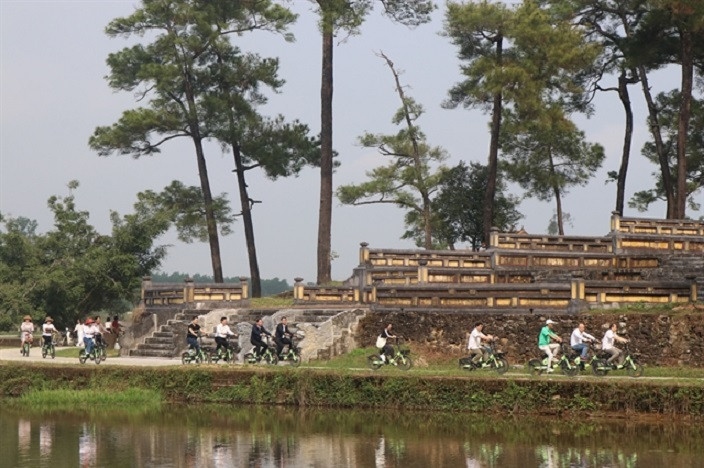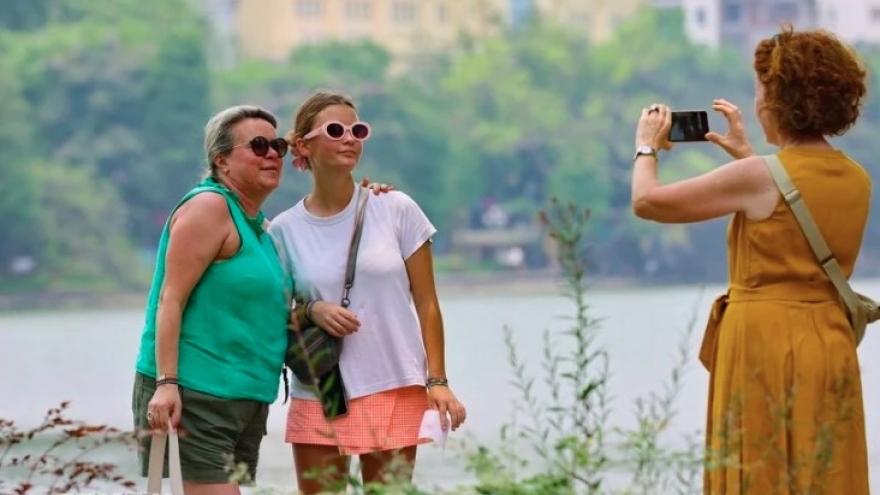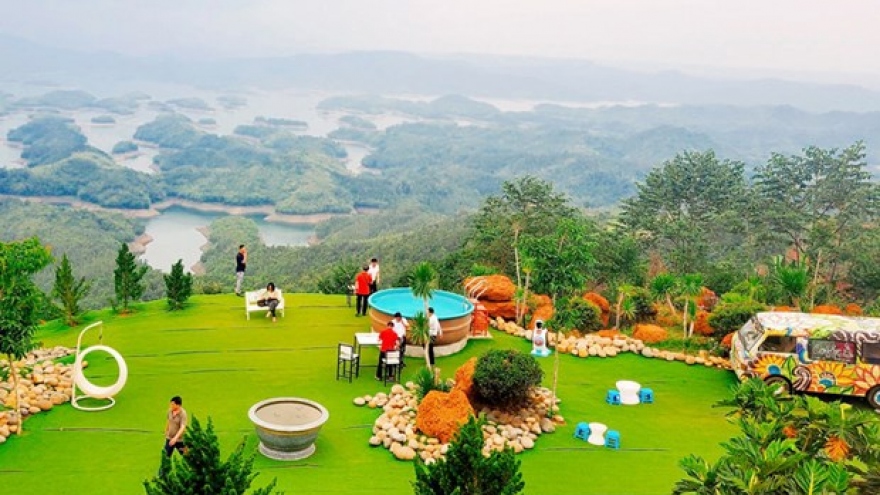Domestic companies run green tourism services to meet travellers’ demands
Tourism companies are adapting to meet the rising trend of green travel, which is increasingly appealing to travellers, especially those from developed nations.

Since 2017, visitors have been able to take kayak tours combined with river clean-up activities, which were first just a thing of curiousity but are now met with enthusiasm among tourists in Hoi An in the coastal central province of Quang Nam.
Costing only US$10 per tourist, the tours have positively impacted the local environment, particularly the downstream area of the Thu Bon River.
Some hotels and travel companies in the ancient town, such as Victoria Hoi An, have introduced sidecar tours to take people to visit traditional villages like Tra Que, where they can see organic farming practices and environmental conservation efforts.
Several restaurants in the province have also started recycling cooking oil to make kitchen soap instead of throwing it away and are also reducing single-use plastic products and repurposing various recycled items as gifts for tourists.
Phan Xuan Thanh, chairman of the Quang Nam Tourism Association, said that there was a growing demand for green tourism experiences and said: “Today, tourists not only seek to explore the beauty of destinations but also prioritise environmentally responsible travel experiences.”
The development and implementation of green technologies in the tourism sector in the province played a crucial role in improving the business efficiency of tourism businesses, while also reducing the negative impacts on the environment and local communities.
While this fosters an attractive and sustainable tourism environment, it also positions the province as a green tourism destination, he said.
Quang Nam was selected by the UK travel magazine Wanderlust in 2023 as one of the top four green tourism destinations in Asia.
In terms of domestic travel, some companies have already embraced the green tourism model.
For example, Trang An Travel has integrated green transformation with digital transformation.
Instead of advertising programmes through printed brochures, they use digital materials accessible via smartphones, QR codes or links, reducing waste and facilitating information access for customers.
Similarly, HonGai Tour Quảng Ninh organises nature exploration tours and plastic waste clean-up activities every Friday in the north-eastern province of Quang Ninh.
Another example is Thien Minh Group (TMG), a major tourism and hospitality enterprise in Vietnam, which was collectively awarded the Travelife Gold certification last year for all its hotels and resorts in Vietnam and Laos.
The company met over 140 strict criteria, including environmental impact management, labour rights and support for local communities, based on proactive business operations.
Nguyan Anh Tuan, director of the Institute for Tourism Development Research, said tourism needed to be a pioneer in green transformation.
“This is a duty and responsibility because tourism heavily consumes using natural resources,” he said.
"Therefore, resource exploitation and use must be oriented towards green growth, a circular economy and the application of models to achieve sustainable development goals."
Challenges
The transformation of tourism towards a wholly green model still faces numerous challenges.
Those include inadequate understanding with the sector, limitations in investment capital and obstacles in terms of evaluation of what makes a criteria truly green.
Tuan said that inadequate understanding of green growth, what is meant by a circular economy and sustainable tourism development of the majority of hotels and regions remains the biggest obstacle in the transformation process.
For example many companies still hesitate to use renewable energy instead of fossil fuels.
Furthermore, the exploitation and use of spontaneous tourism in some localities also negatively impact resources and the environment, with many areas losing out further when the visitors arrive.
“Moreover, specific mechanisms and guidance on developing green tourism are still incomplete,” he said.
Vo Tri Thanh, director of the Institute for Brand and Competitiveness Strategy, said that comprehensive perspectives on the green transformation process to achieve the NetZero goal by 2050 were beginning to spread to various industries, including tourism.
“However, from a policy perspective, making these commitments and desires a reality remains a lengthy process,” he said.
As a provider of solutions for hotels, Lương Thành Nam, chairman of the Board of Directors and CEO of VietSolutions Group, said financial constraints posed significant challenges, such as investing in green solutions.
For example, transitioning from using many small cosmetic bottles in hotels to fewer large bottles required financial resources.
Building large-scale and professional waste-water treatment systems was also a financial challenge that many enterprises were hesitant to undertake.
Furthermore, the awareness of a portion of tourists at tourism sites was still inadequate, leading to littering and a lack of awareness of general hygiene and environmental protection.
Recommendations
Phung Quang Thang, permanent vice chairman of the Vietnam Tourism Association said the enterprises should pay more attention to current demand and trends for green tourism and focus on the core values of green products; identifying tourist destinations and green service providers; enhancing the tourist experiences; providing environmental protection guidance and community interaction.
Training in human resources for green tourism was also essential.
Va An Dan, of the Tourism Faculty at Hanoi Open University, said that transitioning to a green model involved integrating sustainable development principles into tourism workforce training.
They included implementing educational activities and training students and employees at tourism training facilities and tourism enterprises on environment-friendly initiatives, conservation efforts and sustainable tourism practices.
Tuan, director of the Institute for Tourism Development Research, said that it was necessary to deploy an action plan to implement the National Strategy on green growth in the field of tourism in local areas, destinations and tourism service establishments, then chose an appropriate model of tourism development towards green growth.
In particular, it was imperative companies and organisations build what they do into local realities, first of all by raising awareness about tourism development towards green growth, in order to take the right decisions.
Tuan proposed several solutions to develop green tourism in Vietnam.
The solutions included enhancing institutional frameworks, policies and regulations for managing green and sustainable tourism development; developing tourism while respecting, preserving and protecting natural resources, ensuring the originality and value of natural landscapes and cultural heritage; encouraging responsible investment in tourism, creating green tourism products and services to drive the trend of green tourism consumption.
Furthermore, it was essential to diversify green tourism into specific types, such as ecotourism, agro-ecotourism and community tourism; promoting awareness and understanding about green tourism development; controlling investment and uncover business activities that hide under the guise of green tourism projects, but are in reality property speculation and land appropriation, so called green washing.



